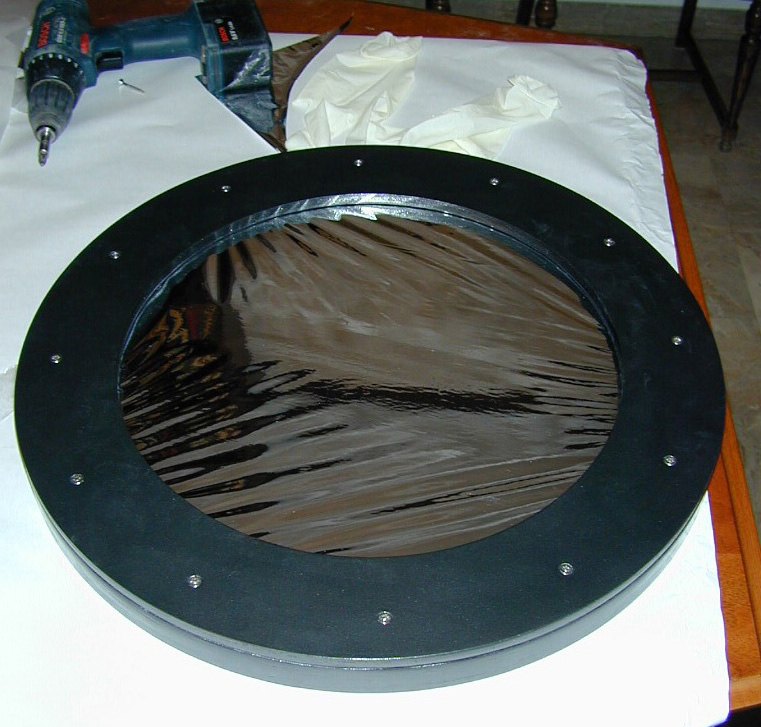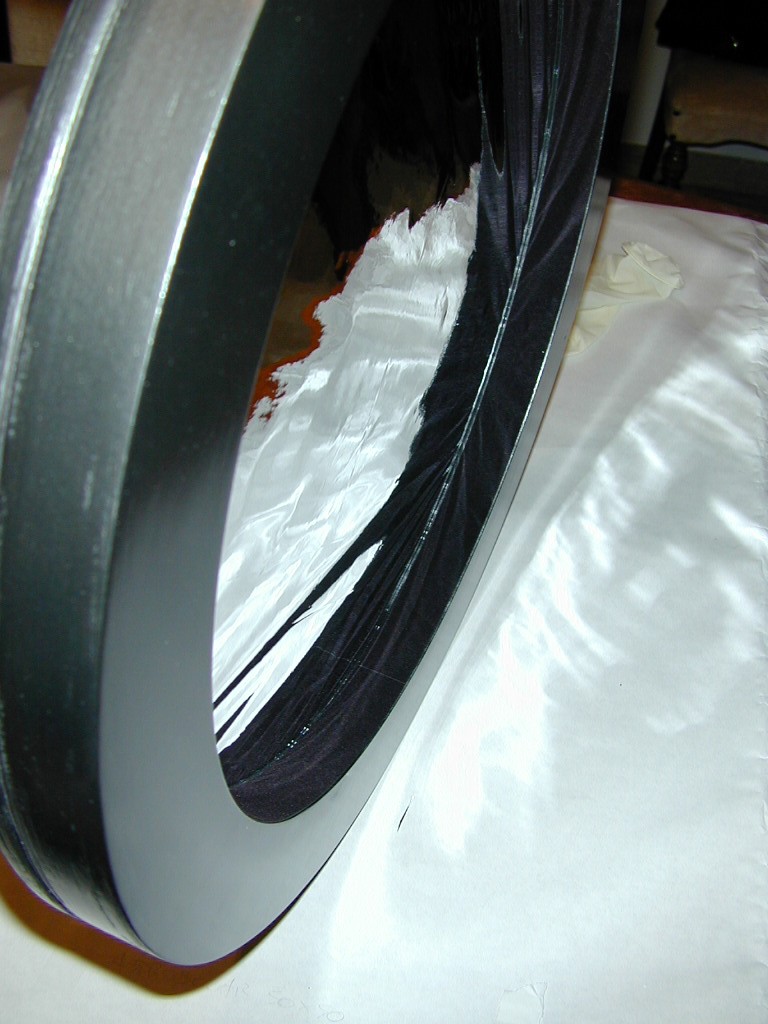Solar Filters
When you choose a solar filter, do not forget the following features: safety, resolution and color.
Obviously the most important feature is the “safety”. The Sun is the only astronomical object that can damage our eyes, forever. Never look at the Sun without a proper protection!
There are no compromises in this field: a solar filter has to be absolutely safe!
Visible light filter - Astrosolar

I read much about the solar filter on the market. There are many producers, such as Thousand Oaks or JMB with glass filters, or a lot of producer that sell polymer filters made with a sheet of Mylar or AstroSolar.
Many magazines have made tests on the quality of these filters and often the best filter seems to be Astrosolar by Baader Planetarium. Effectively I made some comparison between AstroSolar, Mylar and Thousand Oaks and, on my point of view, the best filter is just AstroSolar.
AstroSoar is very cheap. You can buy a sheet 500x1000 mm for little more than 60€ directly from Baader Planetarium.
Once again, I decided for a do-it-by-myself solution. The full-aperture filter in the following images is realized with a sandwich of two ring of plywood cut with an high precision wood machinery and than painted with wood enamel. The inner sides have been covered with black velvet. Then a cut the AstroSolar sheet with gloves and scissors and pressed between the two rings. I used no gauge to fix the polymer but it is simply kept in site by the two wood rings pressed together with 12 stainless steel screws.

Even if the there are some folds in the sheet, the image of the Sun is wonderful, clear and without diffusion or distortions. If you plan to realize such a filter, do not stress the AstroSolar: the image is better if the sheet is in an “at rest” position with some folds than if it is perfectly pulled in front of the telescope.
The color of the sun is quite good, more or less neutral white. Unfortunately it is not yellow-orange as in Thousand Oaks filters, and fortunately it is not magenta-like as through Mylar filters.
Please look the images of the sun taken with this filter in the photo gallery page.
If you want a more friendly view of our star, it is possible to insert a yellow-orange filter.
I have tested the full-aperture filter on May 7, 2003 during the transit of Mercury. The view is absolutely comfortable, the contrast very high and the light well balanced. In spite of 36-cm of aperture the quantity of light is not too much. On the same day, in the dome I placed a Takahashi 106-mm refractor with Mylar filter and the brightness of the sun was higher in the Takahashi.
H-alpha Solar filter - CromixSun
An H-alpha solar filter is not simply an H-alpha solar filter.
The price of these filters is very high and it is very easy to spend a lot of money without obtain what you hope or want to obtain.
All the H-alpha Solar filter are safe but please do not confuse an H-alpha solar filter with one for deep sky imaging. The difference is not only in the in the price but also in the transmission range and in the quantity of light they transmit. If you look at the sun with an H-alpha deep sky filter you can damage your eyes and probably your filter explodes.
The secret of a good solar filter is the pass band. The narrowest is, the best is the view, but it has to be narrow but not too narrow. A 0.5 A pass band is very good to see the surface of the sun (sunspot, flares, faculae) but it is too narrow for prominences; a 0.8 A pass band is very good for prominences but the surface of the sun is not much different from a vision with an AstroSolar filter.

After a series of test I believe that the best choice is a filter with a pass band between 0.6 and 0.7 A.
What ever you decide, please do not buy the 1.5A pass band Thousand Oaks solar filter. It is absolutely un-useful. It is very cheap, but the band is too wide so it is very difficult to see solar prominences and you are not able to see surface details. Moreover the image is without contrast and there is a lot of light diffusion.
After many test on H-alpha solar filter I bought a CromixSun by Marcello Lugli. One of the very nice features of this filter is its modularity: with the same filter you can get 0.8, 0.7, 0.6 and 0.5 A pass band so it is possible to use the best solution for prominences, for surface, flares, and so on.
Another nice features is that with this filter you can use the full aperture of the telescope because the filter is mounted just before the eyepiece and not in front of the telescope. Inside the filter there is an infrared cut-off filter that prevent the real core of the filter to reach too high temperatures.
With this solution it is possible to get the best resolution from the telescope that, in the case of prominences, it is very useful.
Actually I use it with the Orion 120mm refractor and with the C14 along with a frontal shield that reduce the aperture of the telescope to 130mm.
In the future I would like to mount an energy rejection filter (ERF) to avoid too much heat inside the telescope.